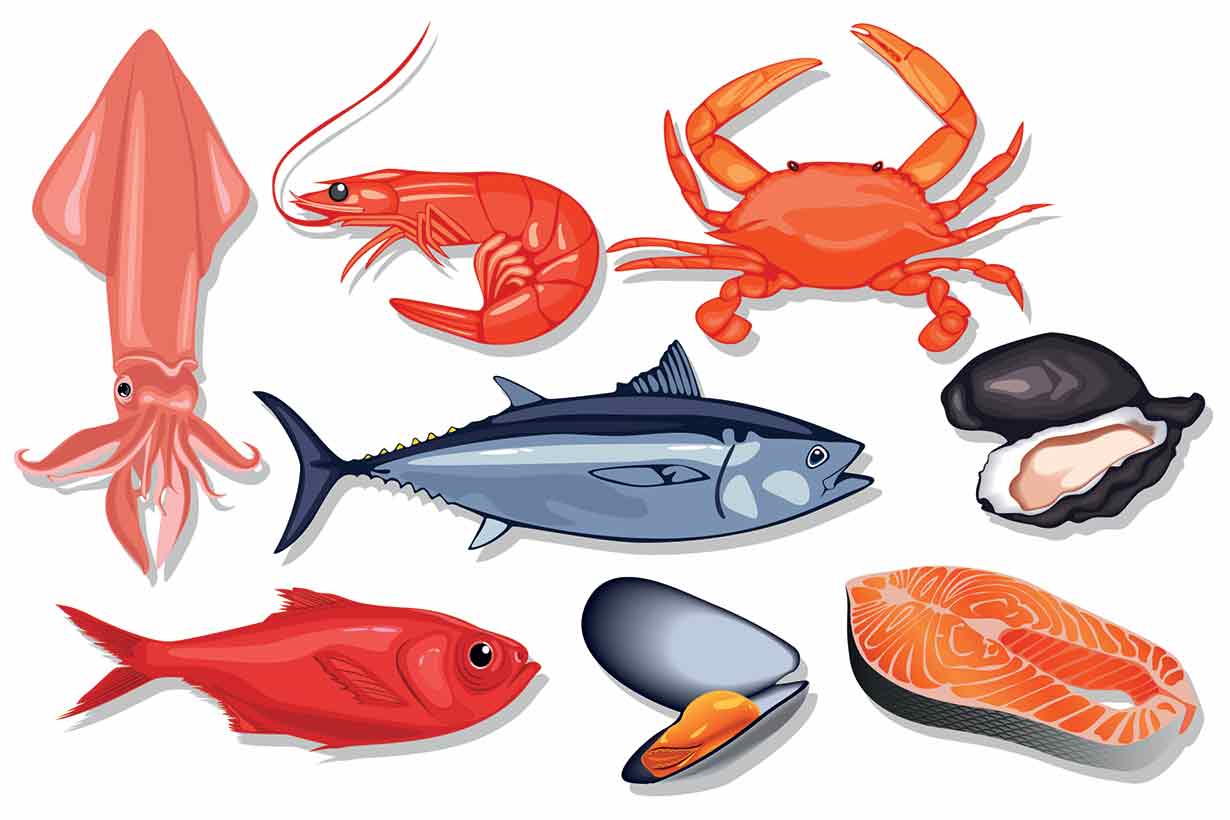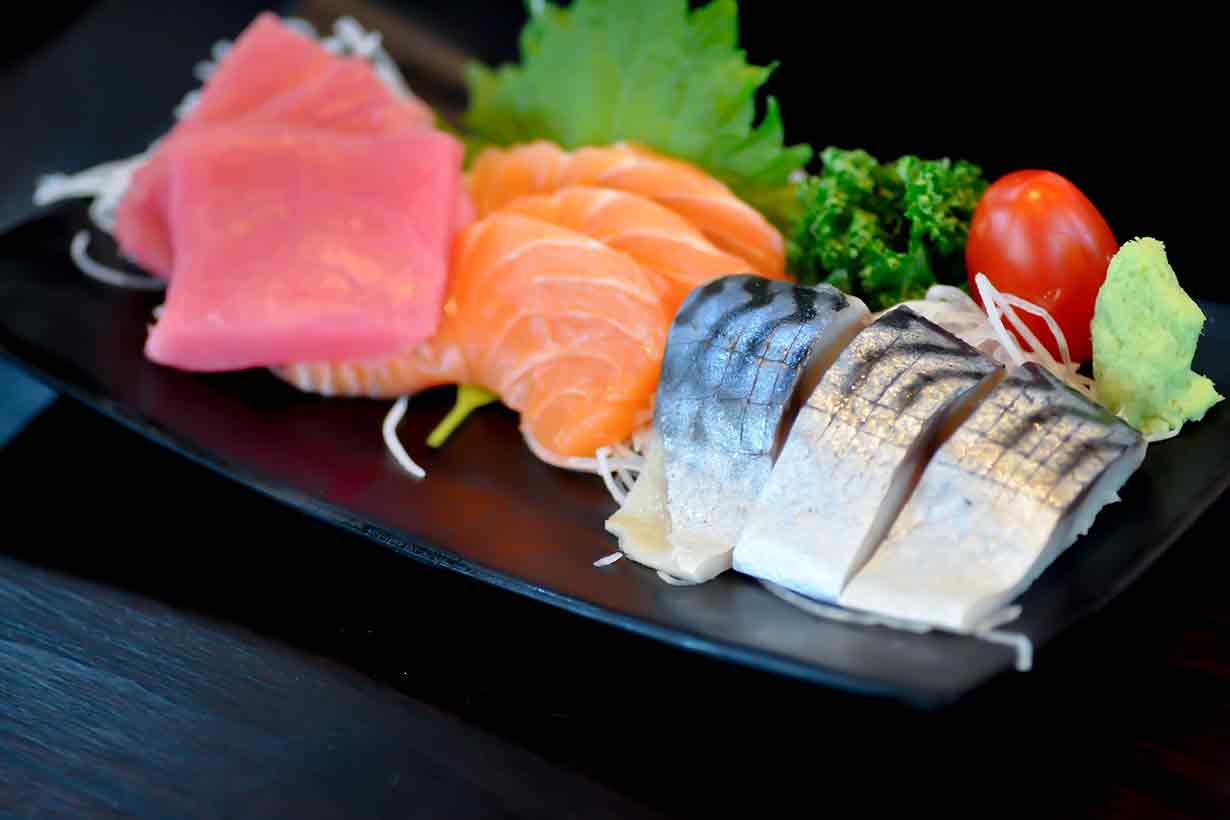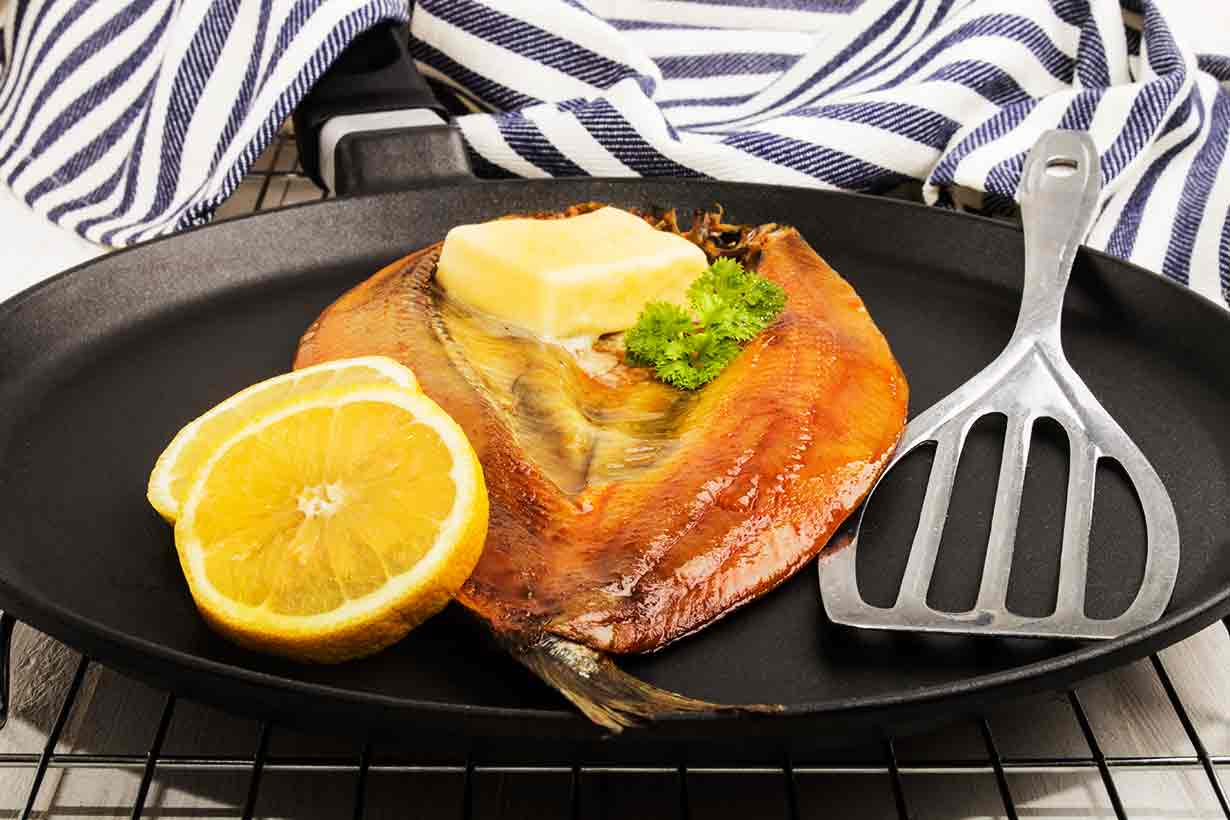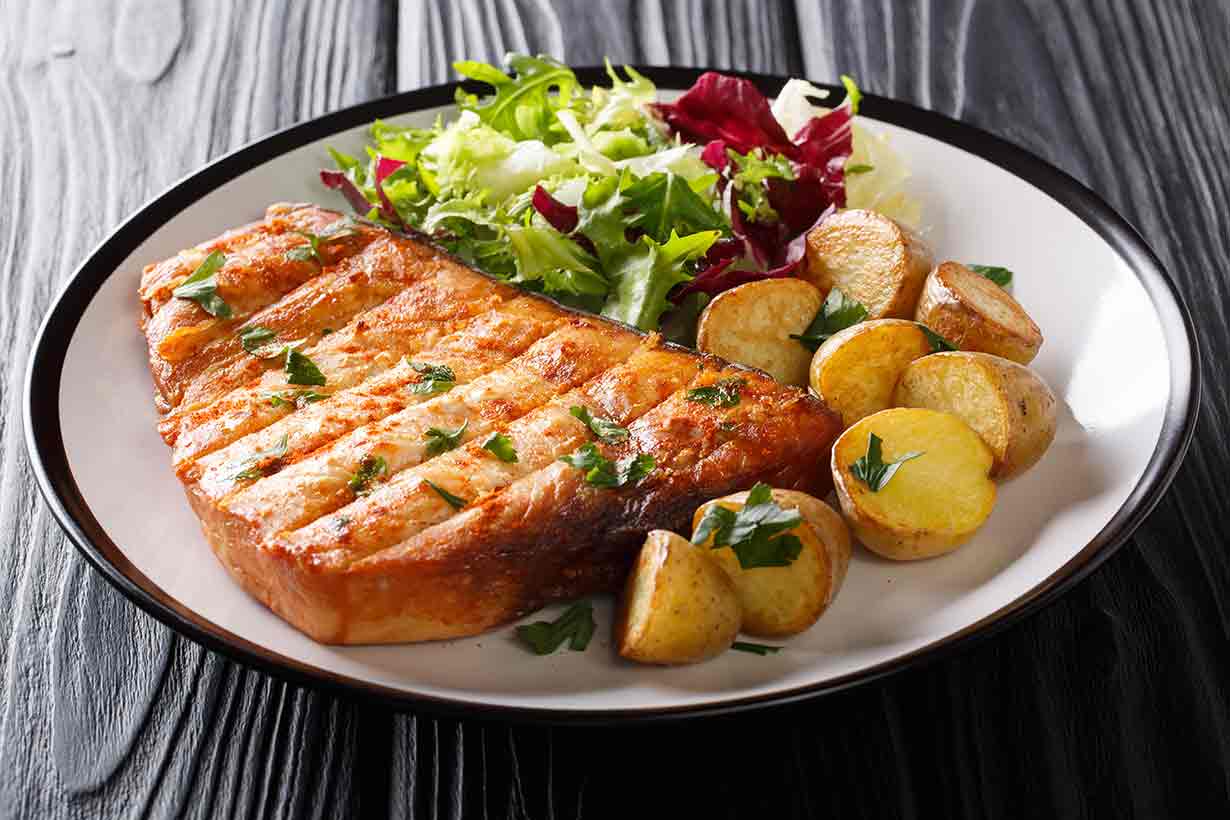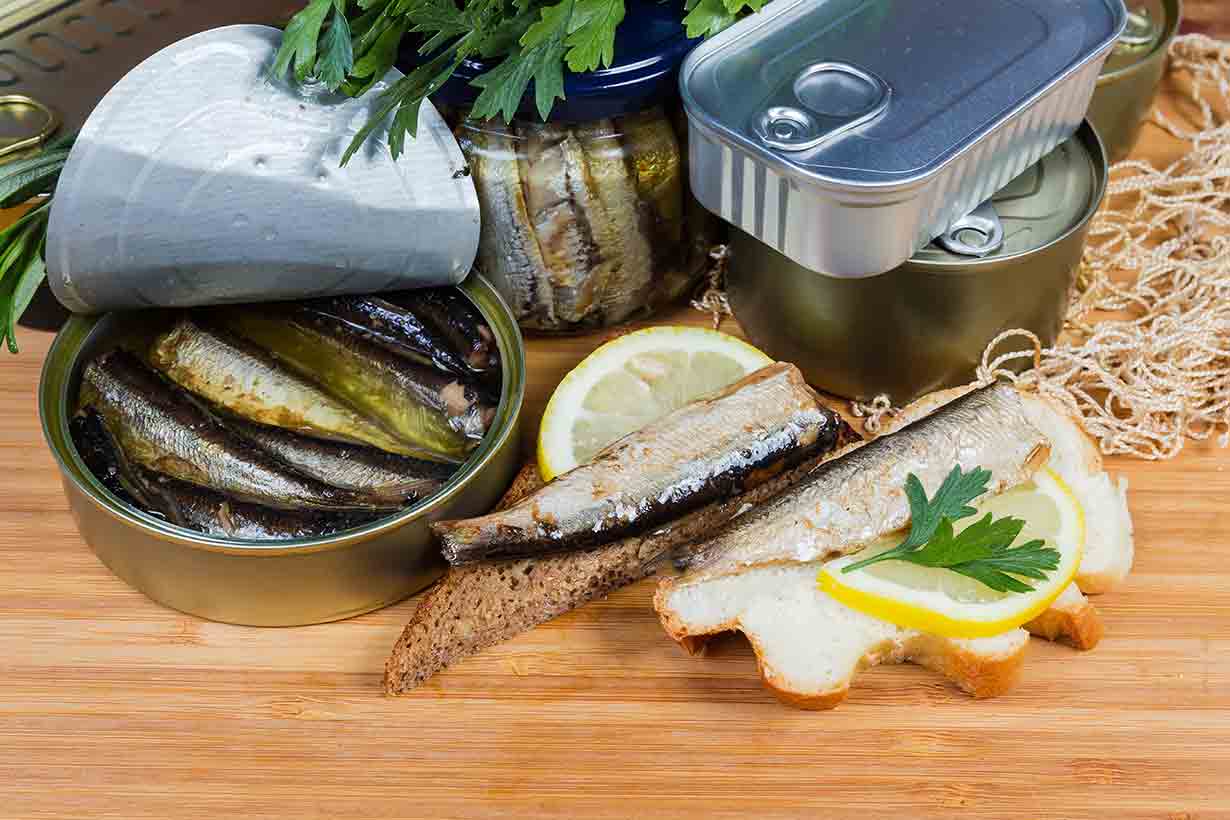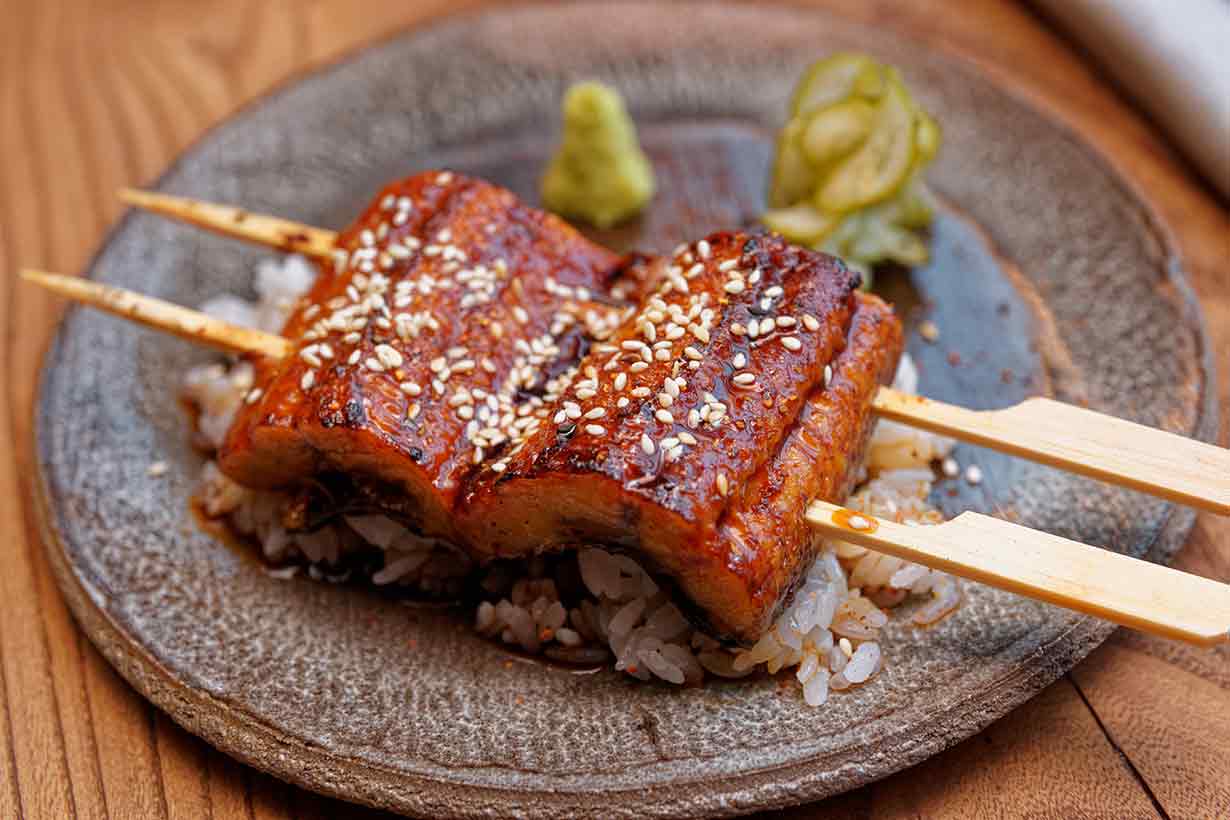Anchovies are a small omega-3 rich fish that seem to appear everywhere.
These little fish are available in the fresh seafood section; they come in cans; on pizzas and even in dried form.
But what do these little fish offer? And how can we use them?
This article is a full guide to anchovies, their nutrition profile, and their potential benefits.
What Are Anchovies?
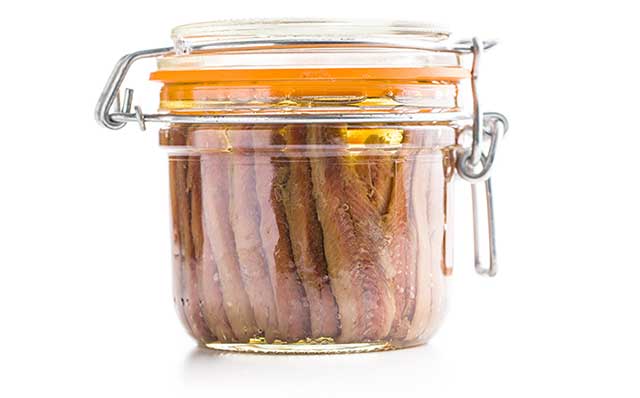
Anchovies are a small fish that belong to the family Engraulidae (1).
These fish are very small, and they range from around two centimeters to forty centimeters in size.
We can find anchovies all around the world, but they are particularly abundant in the coastal areas of the Mediterranean.
Due to their small size, anchovies are prey for almost all carnivorous sea creatures and birds. In contrast, anchovies mainly feed on plankton (2).
Nutritionally, offer an excellent source of protein, healthy fats, and vitamins and minerals.
Anchovies are available to buy in the following forms;
- Anchovy paste: used as a condiment
- Canned: in brine/oil
- Dried: often used to make stocks
- Fermented fish sauce: a condiment popular in Asia
- Fresh
- Frozen
- Salted: salt-packed anchovies are a traditional way of preservation
Nutrition Facts
The following tables show the nutritional values for anchovies per 100-gram serving (cooked).
All nutrition data comes from the Nutrition Coordinating Center’s food and nutrient database (3).
| Calories/Nutrient | Amount |
|---|---|
| Calories | 167 kcal |
| Carbohydrate | 0 g |
| – Fiber | 0 g |
| – Sugar | 0 g |
| Fat | 6.2 g |
| – Saturated Fat | 1.64 g |
| – Monounsaturated Fat | 1.51 g |
| – Polyunsaturated Fat | 2.10 g |
| – Omega-3 Fatty Acids | 1.96 g |
| – Omega-6 Fatty Acids | 0.13 g |
| Protein | 26.05 g |
| Vitamin | Amount | % DV |
|---|---|---|
| Niacin (B3) | 14.02 mg | 70.1% |
| Vitamin D | 114 IU | 28.5% |
| Choline | 83.30 mg | 15.1 % |
| Riboflavin (B2) | 0.26 mg | 15.1% |
| Cobalamin (B12) | 0.53 mcg | 8.8% |
| Pantothenic Acid (B5) | 0.83 mg | 8.3% |
| Pyridoxine (B6) | 0.13 mg | 6.5% |
| Vitamin E | 0.73 mg | 3.6% |
| Thiamine (B1) | 0.05 mg | 3.5% |
| Folate | 8.0 mcg | 2.0% |
| Vitamin A | 13 mcg RAE | 0.9% |
| Vitamin K | 0.10 mcg | 0.1% |
| Mineral | Amount | % DV |
|---|---|---|
| Selenium | 46.70 mcg | 66.7% |
| Iron | 3.25 mg | 18.1% |
| Phosphorus | 174.0 mg | 17.4% |
| Calcium | 147.0 mg | 14.7% |
| Zinc | 1.72 mg | 11.5% |
| Potassium | 383.0 mg | 10.9% |
| Copper | 0.21 mg | 10.6% |
| Magnesium | 41.0 mg | 10.3% |
| Manganese | 0.09 mg | 4.5% |
| Sodium | 104.0 mg | 4.3% |
Benefits of Anchovies
Despite their small size, anchovies are packed full of nutrients.
Here is a look at some of the benefits they offer.
1) Anchovies Are Very High In Omega-3
With almost two grams (1.96g) of omega-3 per 100 grams, anchovies are a significant source of this essential fatty acid.
In fact, anchovies are one of the best providers of omega-3 fatty acids among all foods.
Omega-3 plays a vital role in our health, and human trials show that it has anti-inflammatory properties (4, 5).
Unfortunately, the majority of people do not consume enough omega-3.
The dietary guidelines for Americans recommend a minimum intake of 250 mg EPA/DHA omega-3 per day. However, according to NHANES, the median intake across the United States is only 97 mg per day (6, 7).
A can or two of anchovies per week is an easy way to increase our omega-3 intake significantly.
2) One of the Least Contaminated Seafood Choices (and Low In Mercury)
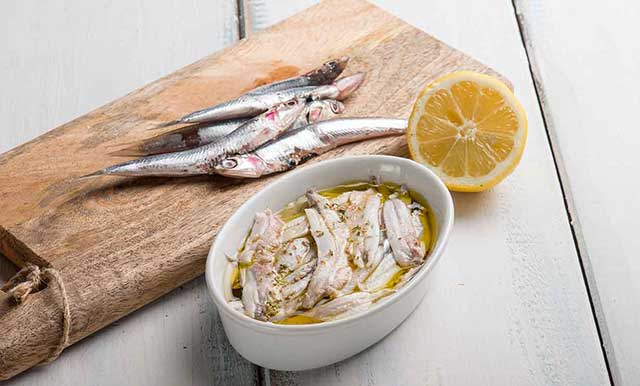
In recent times, the world has become more aware of heavy metal contamination of the world’s oceans. On this note, one of the biggest concerns is methylmercury, which can build up in the fish that consume it (8).
When bigger fish consume the smaller mercury-containing fish, the mercury builds up in their body. Finally, when humans eat the fish, the mercury builds up in our body too.
According to advice from the Environmental Working Group, anchovies are one of the best fish options, since they are low in mercury and high in omega-3 (9).
Since anchovies are small, they come near the bottom of the ocean’s food chain, so they do not accumulate large mercury stores.
Based on tests on the mercury content of commercial fish between 1990 and 2012, anchovies contain a mean mercury concentration of 0.016 PPM. This concentration compares very favorably to fish like skipjack tuna (0.144 PPM) and swordfish (0.995 PPM) (10).
For more information, see this guide to mercury in seafood.
3) A Rich Source of Selenium
Selenium is the primary mineral found in anchovies.
The fish offers 46.7 mcg of selenium per 100 grams, which equals 67% of the daily value.
Among its many different functions, selenium plays an essential role in the body’s antioxidant system by activating selenoenzymes and selenoproteins (11).
These selenium-containing enzymes and proteins are thought to offer protection against oxidative stress (12).
Selenium deficiency affects approximately one billion people around the world. These deficiencies can also occur in the Western world in areas where soil selenium concentrations are low (13, 14).
On the positive side, one standard 140-gram can of anchovies provides almost 100% of the mineral’s recommended intake.
Aside from selenium, anchovies are also high in dietary calcium, iron, and phosphorus.
4) Anchovies Offer a Good Supply of Vitamin D3
Vitamin D is a fat-soluble vitamin that acts more like a hormone within the body.
Since it plays such a significant role in maintaining a healthy immune system, adequate levels of vitamin D are vital to our health (15).
While sunshine is the primary source of vitamin D, food sources of the vitamin can also be important.
Per 100-gram serving, anchovies offer 114 IU of vitamin D, which equals 28.5% of our recommended intake.
Vitamin D3-rich foods like anchovies are a great way to help maintain adequate stores of the nutrient. Especially during cold and dark winter months.
For an even better fish source of vitamin D, see this guide to the benefits of catfish.
5) An Excellent Source of Protein
With more than 26 grams of protein per 100 grams, anchovies are a significant protein source. As a result, a can of anchovies can make a great protein-rich snack.
High protein foods like anchovies have been shown to have a positive effect on appetite levels too.
For example, numerous studies show that protein-dense snacks improve satiety levels and reduce feelings of hunger (16, 17).
Generally, the current consensus is that protein is the most satiating macronutrient (18).
For this reason, eating protein-dense foods like anchovies may help to lower hunger levels.
Potential Drawbacks
Just like any food, anchovies also have some potential negative points to consider.
1) Sustainability Concerns
Although not strictly a nutritional issue, the sustainability of fisheries is important both for food security and the marine ecosystem.
However, not all species of anchovy are on the sustainable seafood list.
Firstly, the Northern anchovy, which lives in the North Pacific, is a sustainably managed fish (19).
Unfortunately, there are sustainability issues with the European and Asian anchovy.
On this note, the Marine Conservation Society and the Environmental Defense Fund give European and South Pacific anchovies moderate to poor sustainability ratings (20, 21).
Want to choose a sustainable option? Then go for the anchovies harvested in the North Pacific.
2) Scombroid Food Poisoning
Scombroid poisoning is a type of food poisoning that occurs due to improper storage of certain fish.
In other words; eating spoiled fish is the cause (22).
This is strictly for information purposes, and it should be taken in context (i.e. not cause undue panic) since bad cases of scombroid poisoning are quite rare.
Scombroid can occur in fish species with high levels of the amino acid histidine, such as anchovy and sardines.
When these fish are stored improperly, marine bacterias can grow which can then convert the histidine into histamine, causing histamine toxicity (23).
These food poisoning cases are usually not severe, but they can leave people feeling sick for a day or two.
In rarer cases when there are severe reactions, medical attention should be sought.
Scombroid risks can be reduced by storing fish in the refrigerator and not exposing them to warm temperatures.
How To Use Anchovies
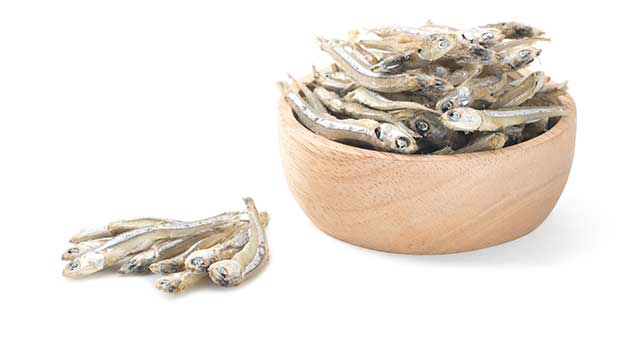
One of the best things about anchovies is how versatile they are, and there are many different ways to use them.
Here are several ideas.
1) Make a Stock
We can use dried anchovies to make tasty stocks for soups and stews.
Also, this is such an easy thing to do;
- Place 8-12 (depending on personal taste) dried anchovies and 5 cups of water into a pan.
- Next, bring the water to a boil and then allow the anchovies to boil for 15 minutes. Add salt if you want.
- Once 15 minutes are up, you’ll have a yellow-colored stock. Remove the anchovies, and then you can use the stock how you like.
2) Use Them In Salads
It is easy to incorporate anchovies into a salad for a little extra protein and omega-3.
Most people probably have their own favorite salad, but here is a tasty combination you could try;
- Leafy greens of choice
- Cherry tomatoes
- Olives
- Mozzarella cheese
- Sliced bell peppers
- Anchovies
- Extra virgin olive oil
- Balsamic vinegar
Just use each ingredient in the amount you prefer.
3) Make a Tapenade
For a tasty tapenade, try the combination of anchovies, garlic, olives, capers, and a variety of herbs.
There is a recipe for this tapenade here.
Final Thoughts
All in all, anchovies are one of the healthiest types of seafood we can eat.
They are a rich source of protein, omega-3, selenium, niacin, and even provide some vitamin D.
For a little fish, they offer a lot of nutritional value – and a big taste too.

